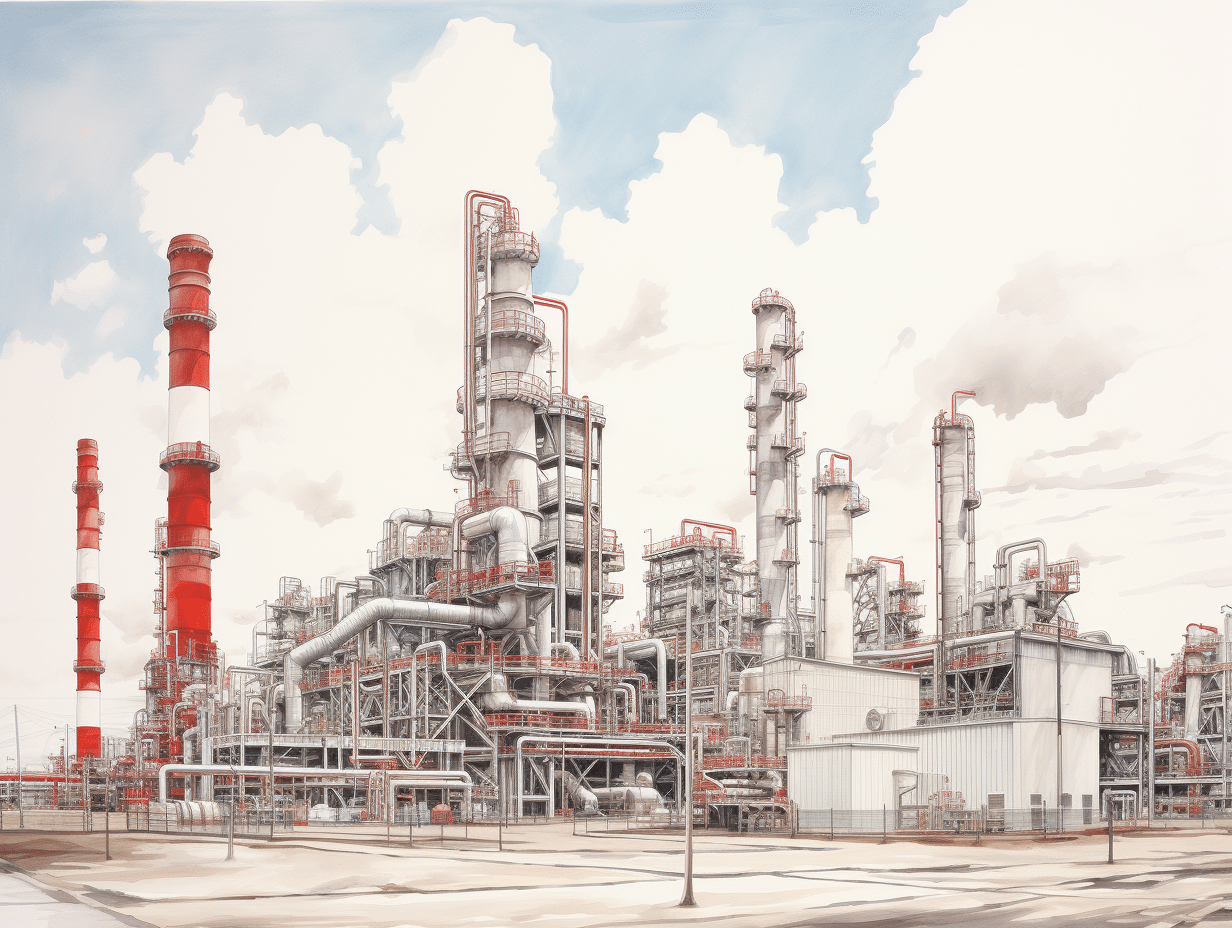What Is the Purpose of a Turnaround?
In the oil and gas industry, a “turnaround” is a scheduled event where a plant or unit is partially or completely shut down for maintenance, inspection, and upgrades.
The Crucial Significance of Turnarounds
Turnarounds in refineries are crucial for maintaining the safety and efficiency of the facility, ensuring it operates at optimal levels and in compliance with regulations. They play a key role in preventing potential operational failures and hazards, thereby sustaining the refinery’s long-term productivity and reliability.
Turnarounds in the oil and gas industry are critically significant for several reasons:
- Safety and Compliance: They ensure the safety of the facility and its workers by addressing potential hazards. Regular turnarounds are essential for maintaining compliance with stringent environmental and safety regulations.
- Operational Integrity and Efficiency: Through maintenance and upgrades, turnarounds help in maintaining the operational integrity of the plant. They are crucial for ensuring that the facility operates at optimal efficiency and capacity.
- Equipment Longevity: Regular maintenance and inspections during turnarounds extend the life of equipment, preventing costly breakdowns and unplanned shutdowns.
- Economic Impact: While turnarounds can be expensive and lead to temporary production halts, they are cost-effective in the long run by preventing major accidents, improving efficiency, and reducing the likelihood of expensive emergency repairs.
- Innovation Implementation: Turnarounds offer opportunities to implement new technologies and innovations that can improve the plant’s performance and efficiency.
Overall, turnarounds are not just a regulatory requirement but a strategic necessity in the oil and gas industry, playing a vital role in ensuring safe, efficient, and sustainable operations.
Neglecting a Turnaround
Neglecting a refinery turnaround can lead to increased safety risks and potential environmental damage due to equipment failure or inefficiencies. This neglect can also result in regulatory non-compliance, leading to legal penalties and significant operational and financial consequences.
Neglecting a necessary turnaround in the oil and gas industry can lead to:
- Increased Safety Risks: Heightened potential for accidents and safety hazards affecting workers and nearby communities.
- Environmental Damage: Potential for leaks and spills causing ecological harm and costly cleanups.
- Regulatory Penalties: Fines and sanctions due to non-compliance with safety and environmental regulations.
- Operational Failures: Reduced efficiency and increased likelihood of unplanned, costly shutdowns due to equipment breakdowns.
- Economic Losses: Higher costs from emergency repairs, accidents, and damaged reputation, exceeding the investment in regular maintenance.
- Asset Deterioration: Shortened lifespan of equipment, necessitating expensive replacements or upgrades.
Overall, neglecting turnarounds can have severe and wide-ranging consequences, including financial, environmental, and safety impacts.
Objectives of an Oil and Gas Turnaround
The objectives of a turnaround in the oil and gas industry are:
- Maintenance and Inspection: Conduct thorough maintenance and inspection of equipment to ensure operational integrity and efficiency.
- Safety Compliance: Ensure the facility meets safety standards and regulations, reducing the risk of accidents and environmental incidents.
- Performance Enhancement: Upgrade and optimize equipment and processes to improve overall plant performance and efficiency.
- Asset Preservation: Extend the life of equipment and assets through regular upkeep, preventing premature replacement costs.
- Regulatory Compliance: Meet environmental and industry-specific regulatory requirements to avoid penalties and legal issues.
In essence, turnarounds in the oil and gas sector are essential for maintaining safe, efficient, and compliant operations.
Navigating the Oil and Gas Turnaround Process
Navigating the oil and gas turnaround process involves meticulous planning and effective execution across multiple stages, from pre-turnaround planning to post-evaluation.
Navigating the oil and gas turnaround process involves several key steps:
- Planning and Preparation: This is the most critical phase, where the scope of the turnaround is defined, resources are allocated, and a detailed schedule is developed. It includes risk assessments, budgeting, and securing necessary permits.
- Mobilization of Resources: Gathering the necessary manpower, equipment, and materials. This might involve hiring contractors, procuring spare parts, and setting up temporary facilities.
- Execution: This phase involves the actual shutdown of operations, followed by maintenance, inspections, and upgrades. It’s crucial to adhere to the planned schedule and budget, ensuring safety protocols are strictly followed.
- Quality Control and Inspection: Throughout the execution phase, continuous monitoring, testing, and inspections ensure that work meets quality and safety standards.
- Completion and Restart: Once maintenance and upgrades are complete, the facility is prepared for restart. This involves careful checks to ensure all systems are operational and safe.
- Post-Turnaround Review: After the restart, a thorough review is conducted to evaluate the turnaround’s success, document lessons learned, and apply these insights to future turnarounds.
Effective communication, robust project management, and stakeholder involvement are critical throughout this process to ensure a successful and efficient turnaround.
Conclusion
In conclusion, turnarounds in the oil and gas industry are vital events that significantly contribute to the safety, efficiency, and regulatory compliance of operations. They involve complex processes of planning, execution, and review, aimed at maintaining and enhancing facility performance.
Neglecting these turnarounds can lead to severe consequences, including safety risks, environmental damage, and economic losses. Therefore, turnarounds are not just regulatory obligations but strategic necessities, essential for the long-term sustainability and success of the industry.
Transform Your Turnarounds with WYATT
When it comes to Mechanical Turnarounds in the Oil and Gas industry, success hinges on expertise, innovation, and a commitment to safety. At WYATT, we excel in delivering turnkey solutions that minimize downtime, optimize efficiency, and prioritize safety.
View: Turnarounds Services
Contact us today to discover how our experienced team, cutting-edge technology, and proven track record can elevate your turnaround projects.




